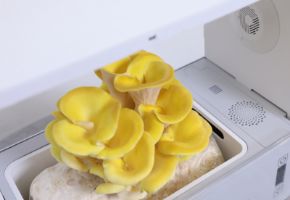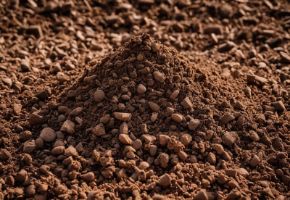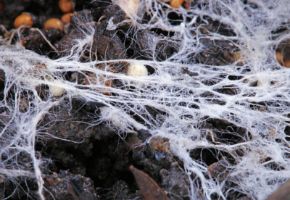Today we take you to discover one of the most beloved and sought-after mushrooms of the spring season: the St. George's Mushroom, scientifically known as Calocybe gambosa. This mushroom, which takes its common name from its frequent association with wild plum thickets, represents a true delicacy for experienced foragers.
But what makes it so special? In this comprehensive guide, we'll take you step by step through the characteristics of St. George's Mushroom, its fascinating biological cycle, the secrets to sustainable harvesting, and the latest scientific discoveries about it. Prepare for a journey into the world of this extraordinary mushroom where science and tradition meet.
Morphological characteristics: learning to recognize St. George's mushroom
Before setting out to search for our precious St. George's Mushroom, it's essential to learn to recognize it with absolute certainty. Mycology, as we know, is a science that requires precision and attention to detail. Let's examine in detail each morphological element that characterizes Calocybe gambosa, to avoid dangerous confusion with toxic species.
The cap: the first identity card
The cap of St. George's Mushroom is undoubtedly one of its most distinctive features. In young specimens, it appears hemispherical in shape, similar to a small closed fist, with a diameter typically ranging between 3 and 10 cm. As the mushroom matures, the cap tends to flatten, assuming a more open shape, sometimes almost depressed at the center.
The cuticle, smooth and matte, presents a coloration ranging from pure white to light cream, with occasional ochre shades in more pigmented varieties. A peculiar characteristic is its tendency to develop small radial cracks in particularly dry weather conditions, creating a fascinating "craquelé" effect.
The gills: a close examination
Turning the mushroom over, we find one of the most important diagnostic elements: the gills. In true St. George's Mushroom these are very dense, with about 40-60 gills reaching the stem, interspersed with shorter gills. The color is always white or very light cream, never taking on pinkish or brownish tones, even at full maturity.
An interesting detail is their attachment to the stem: the gills are emarginate (slightly decurrent), meaning they join the stem with a small "notch" that forms an obtuse angle. This characteristic, observable with a magnifying glass, is fundamental for distinguishing it from similar species.
The stem: robustness and shape
The stem of St. George's Mushroom is another distinctive feature. It typically measures 3-8 cm in height and 1-3 cm in diameter, appearing stocky and robust. The shape is often irregular, with a typical swelling at the base resembling a small bulb. The surface is smooth, dry, white in color, sometimes with slight longitudinal striations.
In this mushroom, the stem is solid (not hollow) in young specimens, while it may become spongy or partially hollow with age. Its consistency is fibrous but tender, different from the fragility of many other white mushrooms.
Flesh and odor: the unmistakable scent
Cutting the mushroom lengthwise, the flesh appears compact and white throughout, without chromatic changes when exposed to air. One of the most characteristic elements of St. George's Mushroom, however, is its intense and particular odor, often described as mealy, similar to the smell of fresh pasta or wet flour.
This scent, which intensifies with drying, is due to the presence of specific aromatic compounds like 3-octanone and 1-octen-3-ol. For many experienced foragers, the odor represents the best diagnostic test for reliably recognizing this species.
Spores and microscopy: scientific identification
For more demanding mycologists, microscopic observation represents the most advanced level of identification. The spores of St. George's Mushroom are hyaline (transparent) in water, but produce a white spore print en masse. Under the microscope they appear smooth, elliptical or slightly ovoid, with typical dimensions of 4-6 × 2-3.5 μm.
The basidia are tetrasporic, while the cap hyphae present clamp connections, an important characteristic for taxonomic classification. To explore these specialized analyses further, I highly recommend consulting the archive of the British Mycological Society, which offers detailed resources on the microscopic characteristics of European fungi.
Similar and dangerous species
Collecting St. George's Mushroom requires particular attention to avoid confusion with toxic species. The most dangerous look-alike is undoubtedly Entoloma sinuatum (once called E. lividum), responsible for serious poisonings. Unlike our St. George's Mushroom, this species has gills that become salmon pink at maturity, a more slender stem, and a less pronounced mealy odor.
Another possible confusion could occur with Clitocybe dealbata, which however typically grows in autumn and presents more markedly decurrent gills. For a detailed photographic comparison, the portal Funghi Italiani offers an excellent visual guide to differences between similar species.
Ecology and habitat: where and when to find St. George's mushroom
Knowing the preferred habitat of St. George's Mushroom is essential for successfully organizing our foraging trips. This mushroom doesn't grow randomly in any environment, but shows precise ecological preferences that vary depending on regions and climatic conditions.
Geographic distribution
Calocybe gambosa is widespread throughout Europe, from the Iberian Peninsula to western Russia, with particular concentration in temperate climate regions. In Italy we find it especially along the Alpine arc and the Apennines, from Liguria to Calabria, with particularly abundant populations in Tuscany, Umbria and the hilly areas of Emilia-Romagna.
Recent studies published in the Journal of Fungal Ecology have highlighted how climate change is modifying the distribution of this species, with a progressive shift northward and to higher altitudes.
Preferred habitats
St. George's Mushroom shows a marked preference for calcareous or marly soils, with basic pH (between 7.5 and 8.5). Typical environments include:
- Poor grasslands rich in perennial herbaceous species
- Woodland edges of broad-leaved trees, especially oaks and hornbeams
- Shrubby areas with presence of blackthorn (Prunus spinosa)
- Pastures not too fertilized
- Gardens and parks with undisturbed soil
A fascinating curiosity is the tendency of St. George's Mushroom to form so-called "fairy rings", circular structures that can reach several meters in diameter and persist for decades in the same location. This arrangement reflects the radial growth of the underground mycelium, which expands about 20-30 cm per year.
Phenology: the St. George's mushroom calendar
Unlike most mushrooms that fruit in autumn, St. George's Mushroom is a typically spring species. In southern regions it may appear as early as March, while in the north the optimal period runs from mid-April to late May. In particularly rainy and cool years, the season may extend well into June.
An old peasant saying goes: "When the blackthorn blooms, look for it under the new moon," suggesting that growth would be favored by lunar phases. Although there is no scientific proof of this correlation, many traditional foragers continue to follow these indications.
Ideal weather conditions
The fruiting of St. George's Mushroom is strictly linked to specific environmental conditions:
- Soil temperature: between 8°C and 15°C
- Humidity: abundant spring rains (at least 40-50 mm in the previous 2 weeks)
- Thermal excursion: cool nights (5-10°C) and mild days (15-20°C)
According to data collected by the Italian Mushroom Observatory, in recent years an earlier growth season has been noted, probably linked to ongoing climate changes.
Sustainable harvesting and preservation
Mushroom harvesting, and St. George's Mushroom in particular, must be approached with ecological respect and awareness. Let's see how to approach this activity sustainably, ensuring the preservation of fungal populations for future generations.
Harvesting ethics
To collect St. George's Mushroom responsibly, it's essential to follow some simple but important rules:
- Collect only mature specimens, leaving the young ones to allow spore dispersal
- Use a wicker basket that allows spores to fall during transport
- Don't destroy the underground mycelium when extracting the mushroom
- Respect quantitative limits set by regional regulations
- Avoid collecting in polluted areas or near intensive cultivation
Many Italian regions require a specific permit for mushroom collecting. Updated information is available on the portal of the Forestry Carabinieri Command.
Optimal harvesting techniques
There are two schools of thought regarding the best method for harvesting mushrooms:
- Cutting at the base with a sharp knife, leaving the rest in the ground
- Complete extraction with gentle twisting, to verify stem characteristics
Recent mycological studies have shown that both methods are acceptable, if performed carefully. The important thing is not to dig in the ground with tools, to avoid damaging the precious underground mycelium.
Preservation of St. George's mushroom
St. George's Mushroom is particularly versatile in cooking, but its season is relatively short. Here are the best methods to preserve it:
Drying
The most traditional method, which enhances the characteristic aroma:
- Gently clean the mushrooms with a brush
- Slice them uniformly (3-5 mm thick)
- Arrange them on racks in a ventilated environment at 40-50°C
- Store in glass jars with airtight lids
Oil Preservation
Perfect for appetizers and side dishes:
- Blanch the mushrooms in water and vinegar (2:1) for 5 minutes
- Drain and dry well
- Arrange in sterilized jars and cover with extra virgin olive oil
- Pasteurize at 80°C for 20 minutes
Freezing
To maintain a texture more similar to fresh:
- Blanching in boiling water for 1-2 minutes
- Rapid cooling in ice water
- Thorough drying
- Freezing in vacuum bags
Nutritional properties and uses in traditional medicine
Beyond its undeniable culinary qualities, St. George's Mushroom possesses interesting nutritional properties and a history of use in folk medicine that deserves exploration.
Nutritional values
Analysis conducted by INRAN (National Research Institute for Food and Nutrition) reveal that 100g of fresh St. George's Mushroom contains:
| Energy | 35 kcal |
| Proteins | 3.2 g |
| Carbohydrates | 4.5 g |
| Fibers | 2.1 g |
| Vitamin D | 12 IU |
| Potassium | 350 mg |
| Selenium | 12 μg |
Bioactive compounds
Recent studies published in the Journal of Medicinal Mushrooms have identified in St. George's Mushroom:
- Immunomodulatory polysaccharides with potential antitumor activity
- Phenolic antioxidants like protocatechuic acid
- Ergosterol, precursor of vitamin D2
- Aromatic compounds with antimicrobial properties
Uses in traditional medicine
In European peasant culture, St. George's Mushroom has been used for:
- Tonic preparations for seasonal changes
- Anti-inflammatory poultices (with dried and powdered mushroom)
- Digestive infusions (with dried stems)
Important note: These traditional uses are not supported by sufficient scientific evidence and should not replace conventional medical therapies.
Historical and cultural curiosities
The relationship between humans and St. George's Mushroom has deep historical roots, with traditions and beliefs that vary from region to region.
The mushroom of St. George
In many areas of Europe, St. George's Mushroom is known as "Fungo di San Giorgio" because its appearance coincides with the saint's feast day, April 23. In England there's even a legend that these mushrooms grow where the saint killed the dragon, from whose poisonous blood toxic mushrooms would have sprung, while St. George's Mushroom would have sprouted where the blessed sword fell.
Rites and superstitions
In rural tradition it was believed that:
- Fairy rings of St. George's Mushroom were places of magical dances
- Collecting the first St. George's Mushroom of the year would bring luck if gifted
- Mushrooms grown north of trees were more aromatic
St. George's Mushroom in Literature
This mushroom is mentioned in numerous historical texts, from Apicius's "De re coquinaria" (4th century AD) to Renaissance herbals. One of the most poetic descriptions is found in "Theatrum Fungorum" by Belgian naturalist Clusius (1601), who defined it as "the most pleasing among spring mushrooms, with a scent reminiscent of fields after rain".
The timeless fascination of St. George's mushroom
Our journey to discover Calocybe gambosa comes to an end, but the fascinating world of this spring mushroom surely has much more to reveal. From its unmistakable mealy aroma to its particular ecology, from folk traditions to modern scientific discoveries, St. George's Mushroom confirms itself as a species of extraordinary interest from multiple perspectives.
For foragers and enthusiasts, it represents not only a gastronomic delicacy, but a true symbol of the forest's spring awakening, a bridge between ancient wisdom and modern research. Whether collected for mycological passion or to enjoy its culinary qualities, the important thing is always to approach this gift of nature with respect, curiosity and conservation spirit.
Next time you find yourself before a circle of these candid mushrooms, stop a moment to observe them: in that moment you're contemplating the result of a perfect ecological balance, the fruit of millennia of coevolution between fungus, plants and environment. Happy foraging to all, and remember: in nature, as in mycology, patience and humility are always rewarded.
The fungal kingdom is a universe in continuous evolution, with new scientific discoveries emerging every year about their extraordinary benefits for gut health and overall well-being. From now on, when you see a mushroom, you will no longer think only of its taste or appearance, but of all the therapeutic potential it holds in its fibers and bioactive compounds. ✉️ Stay connected - Subscribe to our newsletter to receive the latest studies on: Nature offers us extraordinary tools to take care of our health. Fungi, with their unique balance between nutrition and medicine, represent a fascinating frontier we are only beginning to explore. Continue to follow us to discover how these extraordinary organisms can transform your approach to well-being.Continue your journey into the world of fungi










